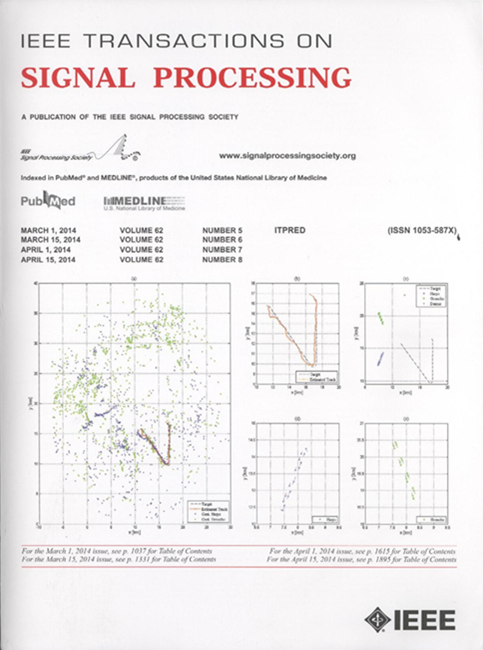重尾分布数据的时变图学习
IF 5.8
2区 工程技术
Q1 ENGINEERING, ELECTRICAL & ELECTRONIC
引用次数: 0
摘要
图模型提供了有效的工具来捕获通过网络定义的数据的底层结构。许多现实世界的网络拓扑都会随着时间的推移而变化。学习在这种网络中对实体之间的动态交互建模被称为时变图学习。目前用于学习此类模型的方法通常对数据中的异常值缺乏鲁棒性,并且无法处理重尾分布,这是许多现实世界数据集(例如,金融数据)的共同特征。本文研究了能够有效表示重尾数据的时变图模型的学习问题。与传统方法不同,我们将具有特定光谱属性的图结构结合起来,以增强模型中的数据聚类。我们提出的方法也可以处理数据中的噪声和缺失值,该方法基于随机方法,其中非负向量自回归(VAR)模型捕获图中的变化,Student-t分布模型表示源自该底层时变图的信号。我们提出了一种迭代方法来学习时变图拓扑的半在线框架,其中只有一小批数据被用来更新图。合成数据集和真实数据集的模拟都证明了我们的模型在分析重尾数据方面的有效性,特别是在金融市场中发现的那些数据。本文章由计算机程序翻译,如有差异,请以英文原文为准。
Time-Varying Graph Learning for Data With Heavy-Tailed Distribution
Graph models provide efficient tools to capture the underlying structure of data defined over networks. Many real-world network topologies are subject to change over time. Learning to model the dynamic interactions between entities in such networks is known as time-varying graph learning. Current methodology for learning such models often lacks robustness to outliers in the data and fails to handle heavy-tailed distributions, a common feature in many real-world datasets (e.g., financial data). This paper addresses the problem of learning time-varying graph models capable of efficiently representing heavy-tailed data. Unlike traditional approaches, we incorporate graph structures with specific spectral properties to enhance data clustering in our model. Our proposed method, which can also deal with noise and missing values in the data, is based on a stochastic approach, where a non-negative vector auto-regressive (VAR) model captures the variations in the graph and a Student-t distribution models the signal originating from this underlying time-varying graph. We propose an iterative method to learn time-varying graph topologies within a semi-online framework where only a mini-batch of data is used to update the graph. Simulations with both synthetic and real datasets demonstrate the efficacy of our model in analyzing heavy-tailed data, particularly those found in financial markets.
求助全文
通过发布文献求助,成功后即可免费获取论文全文。
去求助
来源期刊

IEEE Transactions on Signal Processing
工程技术-工程:电子与电气
CiteScore
11.20
自引率
9.30%
发文量
310
审稿时长
3.0 months
期刊介绍:
The IEEE Transactions on Signal Processing covers novel theory, algorithms, performance analyses and applications of techniques for the processing, understanding, learning, retrieval, mining, and extraction of information from signals. The term “signal” includes, among others, audio, video, speech, image, communication, geophysical, sonar, radar, medical and musical signals. Examples of topics of interest include, but are not limited to, information processing and the theory and application of filtering, coding, transmitting, estimating, detecting, analyzing, recognizing, synthesizing, recording, and reproducing signals.
 求助内容:
求助内容: 应助结果提醒方式:
应助结果提醒方式:


